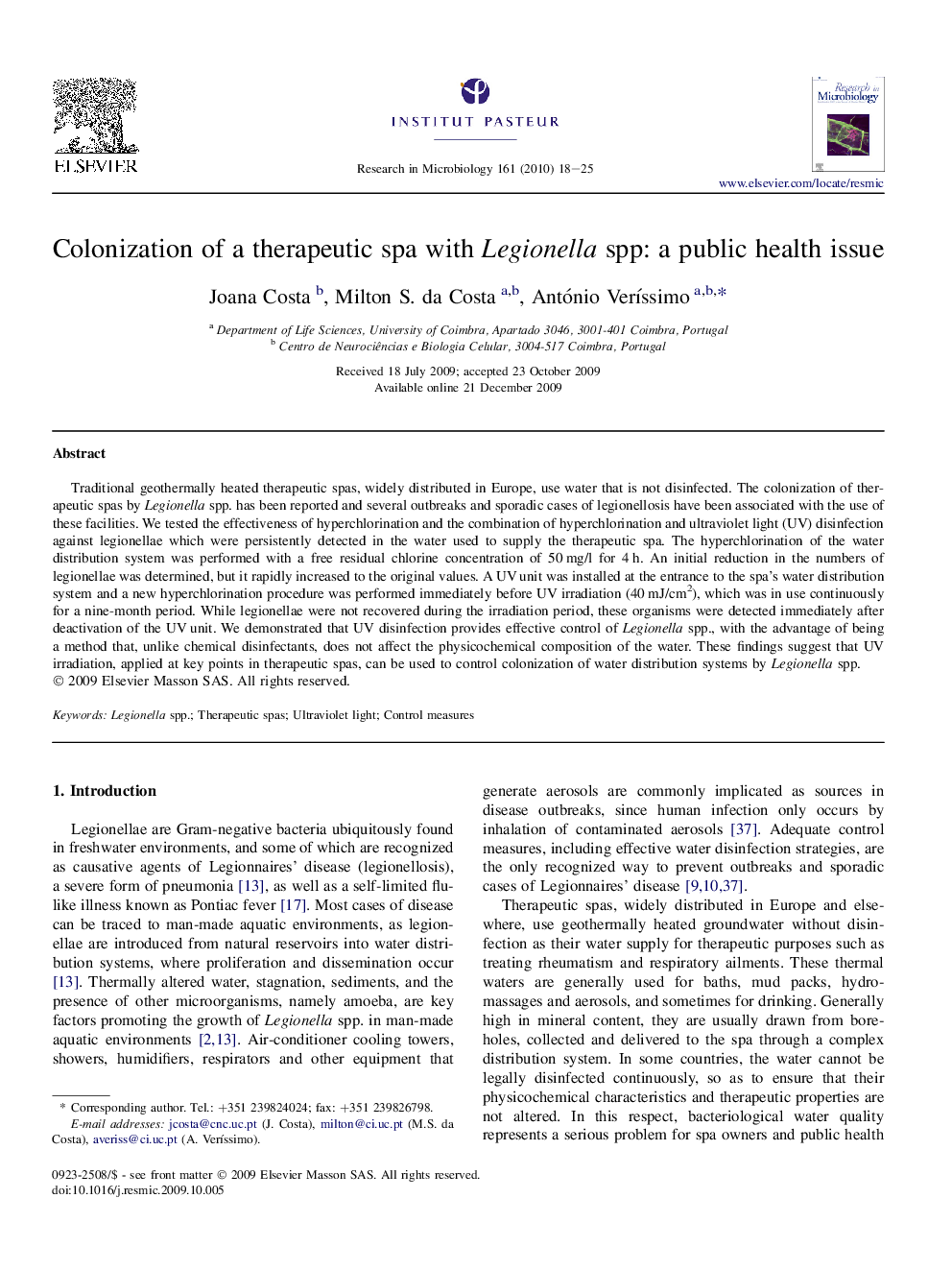| Article ID | Journal | Published Year | Pages | File Type |
|---|---|---|---|---|
| 4359137 | Research in Microbiology | 2010 | 8 Pages |
Traditional geothermally heated therapeutic spas, widely distributed in Europe, use water that is not disinfected. The colonization of therapeutic spas by Legionella spp. has been reported and several outbreaks and sporadic cases of legionellosis have been associated with the use of these facilities. We tested the effectiveness of hyperchlorination and the combination of hyperchlorination and ultraviolet light (UV) disinfection against legionellae which were persistently detected in the water used to supply the therapeutic spa. The hyperchlorination of the water distribution system was performed with a free residual chlorine concentration of 50 mg/l for 4 h. An initial reduction in the numbers of legionellae was determined, but it rapidly increased to the original values. A UV unit was installed at the entrance to the spa's water distribution system and a new hyperchlorination procedure was performed immediately before UV irradiation (40 mJ/cm2), which was in use continuously for a nine-month period. While legionellae were not recovered during the irradiation period, these organisms were detected immediately after deactivation of the UV unit. We demonstrated that UV disinfection provides effective control of Legionella spp., with the advantage of being a method that, unlike chemical disinfectants, does not affect the physicochemical composition of the water. These findings suggest that UV irradiation, applied at key points in therapeutic spas, can be used to control colonization of water distribution systems by Legionella spp.
